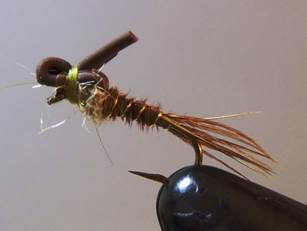FOOD SOURCES ON SPRING CREEKS (part 6)
| Sysadmin Note |
|---|
| Part 5 can be found here |
Ascending Mayfly Nymphs
Perhaps mayfly hatches are the most iconic and captivating images of spring creek fishing. Do you want to fish with dun and emerger dry-flies? Yes, you can and will enjoy. However what is the more effective fly/method to catch more numbers and even bigger trout during the hatch? It's the nymphs that are ascending the water column to hatch. I'm positive some readers have just said "Ugh? What? Nymphs?" I know, I know. There are two-fold mistakes. The first one is the "lingo", which I can explain with my words. When fly fishers mention "nymph", often it implies to fish with any kinds of subsurface flies (often bright beads incorporated) deeply with indicators/bobbers. That's not the kind of "nymph" I'm talking about. What I mean here is "mayfly nymph" as the creature. We fish with them either on the surface or slightly below the surface. If you still don't get it, that's the second mistake; mix of dry-fly snobbery and misunderstanding of trout/insect behaviors. To add more dignity and support to this chapter, I will quote from Dave Whitlock's "Guide to Aquatic Trout Foods" (ISBN: 0-941130-64-9). "During the nymphal emergence and surface transformation, the mayfly is most attractive and vulnerable to the trout. Trout often follow the nymphs to the surface and suck them in out of the surface film just before or during the transformation to the free dun. Understanding and fishing nymphs is as much, if not more, sophisticated and complex a technique as the floating-fly techniques."
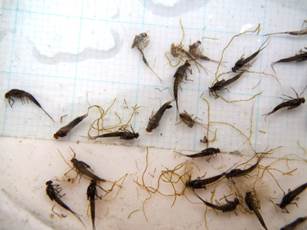 |
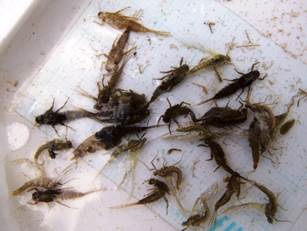 |
A stomach content of trout that was rising during BWO hatch. |
A typical stomach sampling result during PMD hatch. |
Seasonal Importance:
There are two major mayfly hatches that deserve special attention. The Pale Morning Dun (Ephemerella inermis and infrequens) prime hatch is from late June to most part of July. There are still some insects that hatch into August. One can observe PMD hatches throughout the season, but normally not in sufficient numbers to be considered a hatch. Another major mayfly is the Blue Winged Olive (Baetis). Spring BWO are seen from late March to April. Fall BWO hatch through October and in November.
Winged Victory Nymph
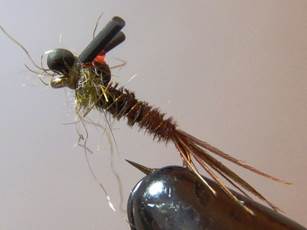 BWO |
|
|
|
FA Nymph
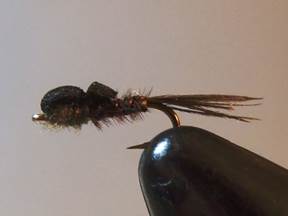 |
|
How to Fish:
If you are a confident angler, who can cast accurately and who can detect takes (by feel and subtle movement of leaders), just tie on one of these patterns singlehandedly. Also if you can get really close to a visible trout that is feeding subsurface, you should be able to see this type of fly without an indicator or a dry-fly above. (yet one needs be a confident angler) Trailing this type of fly under dun imitations is always effective. Often trout will also take dun dry-flies too.
Satoshi Yamamoto, https://leftyangler.blogspot.com, is a guide and a professional fly-tyer in Livingston, MT.
| Sysadmin Note |
|---|
| Part 7 can be found here |

